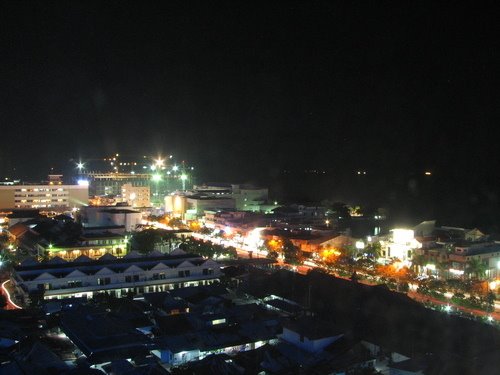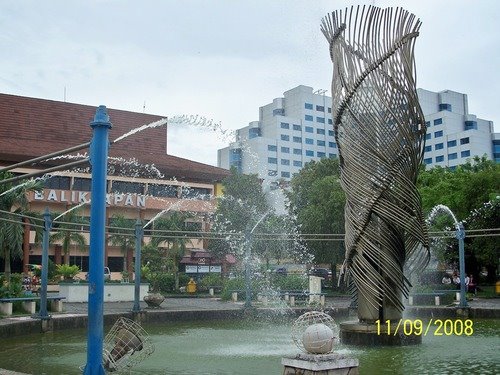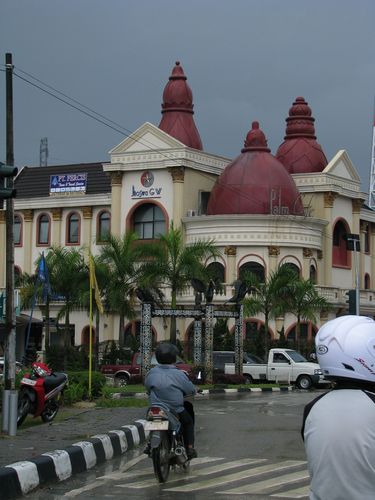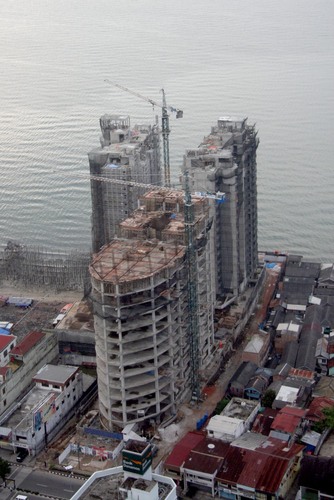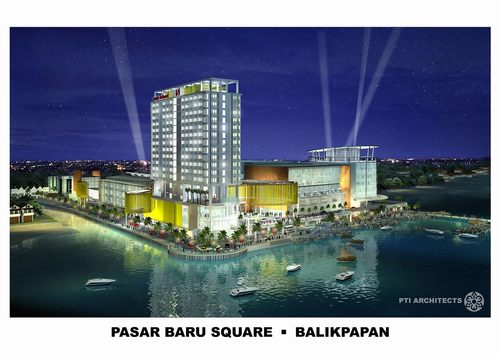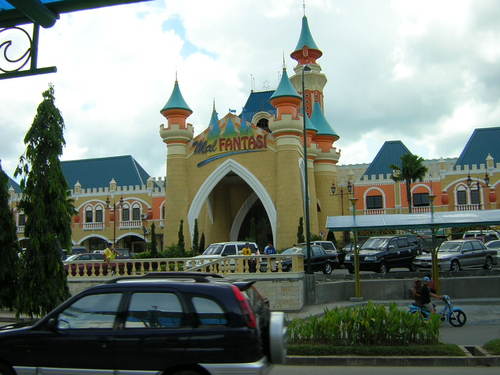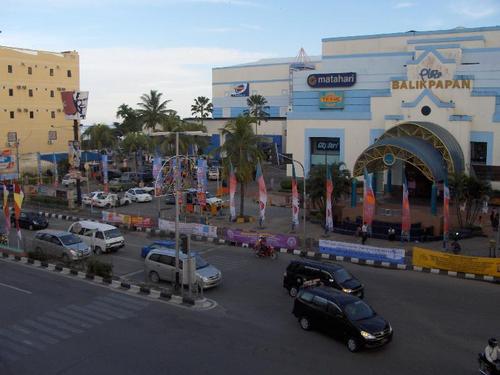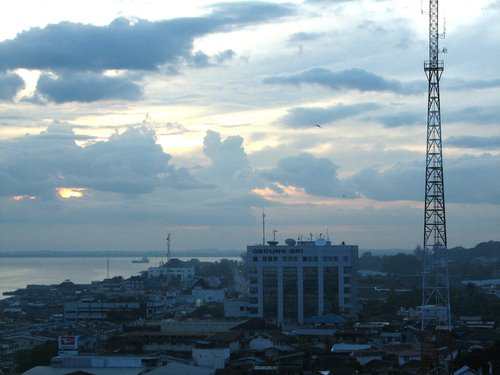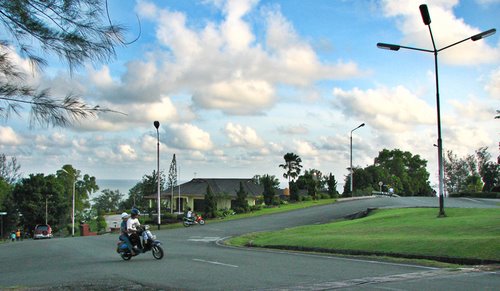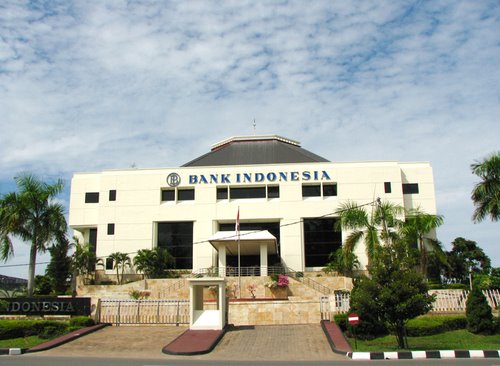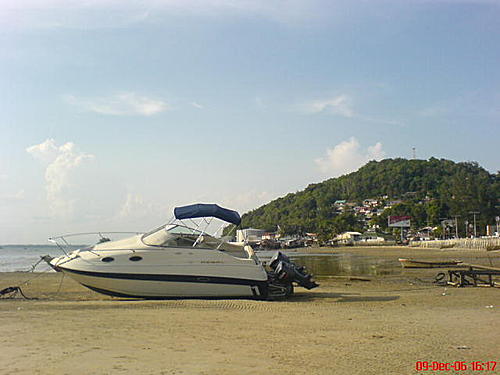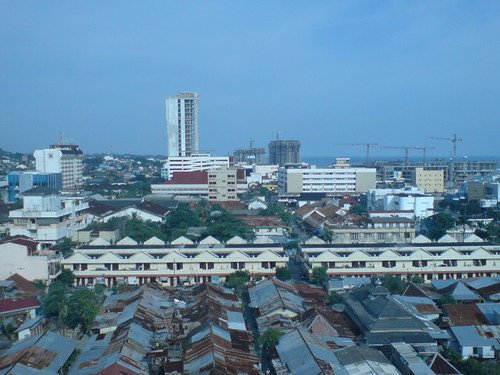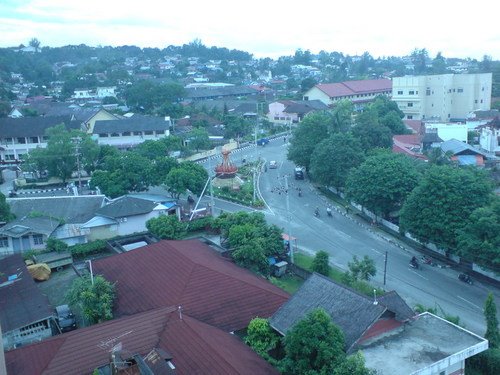Balikpapan
From Wikipedia, the free encyclopedia
| Balikpapan | |
| Location of Balikpapan in Indonesia | |
| Coordinates: | |
| Country | Indonesia |
|---|---|
| Province | East Kalimantan |
| Government | |
| - Mayor | Imdaad Hamid |
| Area | |
| - Total | 503.3 km² (194.33 sq mi) |
| Population (2005) | |
| - Total | 500,000 |
| Website: www.balikpapan.go.id | |
Balikpapan is a seaport city on the eastern coast of Borneo island in the East Kalimantan province, a resource-rich region well known for its timber, mining and petroleum export products. Two harbors, Semayang and Kariangau - ferry harbour, and the Sepinggan International Airport are the main transportation access to and from the city. It is one of Indonesia's hidden jewels.It is beautifully quaint , a traditional fishing village slowly but steadily catching up with this everchanging modern world. Hints of modern life style can be seen as new hotels and shopping malls have started popping out like mushrooms in the rainforest.
Contents[hide] |
[edit] Geography
The topography of the municipality of Balikpapan is generally hilly (85%), with only small areas of flatland (15%), particularly along the coast and surrounding the hilly areas. The hills are less than 100 meters higher than the adjacent valleys. The altitude of Balikpapan ranges from 0 to 80 meters above sea level.
Most of the soil in Balikpapan contains yellow-reddish podsolic soil and alluvial and quartz sand, making it extremely prone to erosion.
[edit] History
Prior to the oil boom, Balikpapan was an isolated Bugis fishing village. The etymology of Balikpapan's name (lit. balik is behind and papan is a plank) came from a folk story where a local king threw his newborn daughter into the sea to protect her against his enemies. The baby was tied beneath some planks, which were discovered by a fisherman.[citation needed]
In 1897, the first drilling of oil began by a small refinery company.[1] Construction of roads, wharves, warehouses, offices, barracks and bungalows started when a Dutch oil company arrived in the area. On January 24, 1942, Balikpapan became a war theatre between Japanese army and the Allied Forces in which the oil refinery and other facilities were heavily damaged. Several campaigns followed until the 1945 Battle of Balikpapan which concluded the Allied Forces' Borneo campaign after which they took control of the Borneo island.
Extensive wartime damage curtailed almost all oil production in the area until major repairs were performed by the Royal Dutch Shell company. Shell continued operating in the area until Indonesian state-owned Pertamina took it over in 1965.[1] Having a lack of technology, skilled manpower and capital to explore the petroleum region, Pertamina sublet petroleum concession contracts to multinational companies in the 1970s.
Being the only oil refinery site in the region, Balikpapan emerged as a revitalized center of petroleum production. Pertamina opened its regional headquarter in the city, followed by branch offices established by international oil companies. Hundreds of labourers from other part of Indonesia, along with skilled expatriates who served as managers and engineers, flocked into the city.
[edit] Administration
Balikpapan is bordered by the following:
- Kutai Kartanagara Regency (in the North)
- Makassar Strait (in the South and East)
- Penajam Paser Utara Regency (in the West)
[edit] Demographics
During the Suharto administration, Indonesia faced unprecedented growth of economic expansion by promoting foreign investments, particularly in the exploitation of natural and mineral resources. Although the policy was heavily criticized for uncontrolled environmental damages and corrupted bureaucrats and politicians, it significantly boosted urban development in resource-rich cities. In 1970s, Balikpapan experienced 7% population growth annually when exports of timber and petroleum increased dramatically.[1]
[edit] Economy
Some multinational corporations have commercial activities in this city such as Pertamina (Indonesia), Total S.A. (France), Chevron (US), Schlumberger, and Halliburton (US). Government public services also attract many people to work in this area, with presence of Bank Indonesia, Finance Department, Port of Semayang, and several others.
Balikpapan oil refinery is located on the shore of Balikpapan Bay and covers an area of 2.5 km². Established in 1922, it is the oldest refinery in the area. It was destroyed in World War II by the Allies of World War II and re-built in 1950. The refinery has two subunits, Balikpapan I and Balikpapan II.
Balikpapan I consists of two raw oil refinery units that produce naphtha, kerosene, gasoline, diesel fuel, and residue and one high-vacuum unit that produces 100 tonnes (approx 98 tons) of paraffin oil distillate (POD), used as raw material for wax factories. The wax itself has various grades and is sold domestically and internationally.
Opened on November 1, 1983, Balikpapan II has a hydro-skimming and hydro-cracking refinery and produces petrol, LPG, naphtha, kerosene, and diesel fuel.
[edit] Transportation
Balikpapan's airport is the Sepinggan International Airport. This is the second busiest Indonesian airport after Soekarno-Hatta International Airport[citation needed] and permits large aircraft.
Airlines currently using the airport are Lion Air, Merpati Airlines, Batavia Air, Kartika Airlines, Sriwijaya Air (domestic routes), and Garuda Indonesia, Air Asia, and SilkAir (International routes).
The airport is one of the five principal sites in Indonesia where Muslims begin the pilgrimage to Mecca, the "Hajj". Between 1996 and 1997, the airport served over 4,500 East Kalimantan pilgrims, and from 1997 to 1998, it served pilgrims from East Kalimantan, South Kalimantan, Central Sulawesi, and North Sulawesi.
Other than the airport, Balikpapan also has a seaport called "Semayang" which has many destinations to Surabaya, Makassar, Jakarta, Pare-Pare, and Manado. in 1990s, transportation using ships was very popular. But after the booming of so many new airlines with very cheap price, people now prefer travelling using airplanes to the ships.
The ferry is also another alternative for travelling to other places within coastal areas in East Kalimantan, such as Penajam.
Tourists who wish to see the real side of Indonesia should definitely come here. Especially those who enjoy unbelievably fresh seafood caught off the ample shores of balikpapan.
[edit] References
- ^ a b c William B. Wood (April 1986). "Intermediate Cities on a Resource Frontier". Geographical Review 76 (2): 149–159. doi:. http://links.jstor.org/sici?sici=0016-7428%28198604%2976%3A2%3C149%3AICOARF%3E2.0.CO%3B2-7.
[edit] See also
| |||||||||||||||||||||||||









